In this article we are going to learn more about how well activated carbon works to filter indoor air, along with the disadvantages of using activated carbon filters in your air handling system or air purification device inside your home.
Activated Carbon vs Charcoal
 Activated carbon is a technology that has many names including activated charcoal, charcoal, and carbon that will all work to filter indoor air of pollutants that may be accumulating within a confined space overtime. Whether you recently painted your home, installed new flooring, added a new pet to the family, or even cooked a family meal all day in your oven, pollutants will be produced in high concentrations throughout your home. The pollutants that may be brought into your home from various sources (like those listed above) can include chemical odors like VOCs, odorous compounds like urine, cooking smells, etc., and even particulate matter like pet dander and mold spores into the air.
Activated carbon is a technology that has many names including activated charcoal, charcoal, and carbon that will all work to filter indoor air of pollutants that may be accumulating within a confined space overtime. Whether you recently painted your home, installed new flooring, added a new pet to the family, or even cooked a family meal all day in your oven, pollutants will be produced in high concentrations throughout your home. The pollutants that may be brought into your home from various sources (like those listed above) can include chemical odors like VOCs, odorous compounds like urine, cooking smells, etc., and even particulate matter like pet dander and mold spores into the air.
However, when it comes to activated carbon vs charcoal there can be some confusion on the meaning of these two classifications of air filtration and if they in fact mean the same exact thing as one another. Charcoal is another name for carbon, and this refers to the untainted absorbent material that occurs prior to the activation of the material that is used to capture and trap pollutants within the media. When the charcoal (aka carbon) materials are activated either through physical (using hot gas) or chemical activation (using chemical agents like potassium permanganate), it will allow for the activated carbon to form a larger surface area which will allow for more contaminants to be stored on the carbon filter media. Penn State University’s research on activated carbon found that one pound of activated carbon contains a surface area of approximately 100 acres.
How Do Carbon Filters Work
How does carbon filtration work? The process in which activated carbon filters work when placed in an air filtration device or air system is through a method called adsorption. The activated carbon filter’s adsorption process works by trapping pollutants in the pore structure of the carbon and containing them in this filter until the carbon media fills up completely. Activated carbon is one of the most effective filtering methods for removing chlorine, sediment, volatile organic compounds (VOCs), and odors from the air. The typical particle sizes that can be removed by carbon filters range from 0.5 to 50 micrometers from the indoor air – a less efficient filtration method for filtering fine particulate matter than other technologies, such as HEPA filters.
Furthermore, the activated carbon possesses these capabilities because of the treatments it undergoes where oxygen is used to open up millions of tiny pores between the carbon atoms. These treatments to carbon filters are done to offer a filtration method that can be used to adsorb odorous and colored substances from gases and liquids in the air. The adsorption process on carbon filter material works by attaching these pollutants by chemical attraction, which means that eventually when the entire carbon filter fills up it will begin the slow re-releasing of the trapped pollutants back into the indoor air space, tainting the indoor environment once again.
How Long Does Activated Carbon Last in Filter
 A big question about the effectiveness of activated carbon filters is how long does activated carbon last in an air filter when placed and used inside of an air handling system or air purifier. Although this is a great question, it is often a difficult one to answer since many variables will influence the lifespan of these filters inside of your personal indoor environment. The major factors to consider in your home that can exacerbate the life of the filter will include the amount of pollutants in the air (such as new floors installed, construction in the home, etc.), the airflow and ventilation in the space, and the overall size of the indoor space.
A big question about the effectiveness of activated carbon filters is how long does activated carbon last in an air filter when placed and used inside of an air handling system or air purifier. Although this is a great question, it is often a difficult one to answer since many variables will influence the lifespan of these filters inside of your personal indoor environment. The major factors to consider in your home that can exacerbate the life of the filter will include the amount of pollutants in the air (such as new floors installed, construction in the home, etc.), the airflow and ventilation in the space, and the overall size of the indoor space.
Additionally, the amount of carbon stored within the filter media that you are using in your home will also influence the life of the carbon filter. Those carbon filters that contain as much as 10lbs of carbon in its filter media will last for quite a while, whereas one that contains under 5lbs may be quickly used when placed in your home. On average, however, most carbon filters will only last for about a month to three months, based on carbon manufacturers.
Carbon Air Filter Disadvantages
Similar to nearly every other air filtration technology, activated carbon air filters will have several disadvantages that will be dealt with by those homeowners that decide to utilize this technology in their home’s air quality solutions like air handling systems and air purifiers. Among the drawbacks of using activated carbon for air filtration the top two disadvantages include the following; the filter replacement frequency and cost and the inability for carbon to completely remove and neutralize collected pollution on its filter media.
- Filter Replacement Cost: The process of removing fully saturated carbon filters can become inconvenient, a hassle, and costly for many people who use these methods in their indoor air quality products. Activated carbon filters are usually in need of being replaced more often than other filters due to the way that carbon filters work, by filling up by weight. Once the carbon filter becomes full, if it is not changed immediately, the filter will slowly begin to re-release the collected pollutants back into the indoor air that were once trapped on this filter media (acting like a sponge!). Thus, when this occurs it will render the carbon filter ineffective in its job of cleaning the indoor air.
- Lack of Pollutant Neutralization Capabilities: As we discussed above, carbon air filters are not able to neutralize and completely remove pollutants from the environment, rather they work by storing the pollutants onto the filter media trapping them in the activated carbon material. However, when the carbon filter fills up completely it will re-release the collected pollutants off the filter and into the indoor space it once cleaned. Additionally, carbon filters are not able to collect fine particulate matter and thus this is a downfall for many people who want these pollutants removed from their home’s air as well.
Learn more about how carbon compares to the EnviroKlenz® technology used in the EnviroKlenz Air Purifier and HVAC Filter!
The EnviroKlenz® Difference
EnviroKlenz®
The EnviroKlenz® Mobile Air System is a class of its own. It uses two stages of filtration to safely provide clean air.
The EnviroKlenz® Air Cartridge uses safe, earth mineral technology to absorb and then internally break down the chemical without releasing anything into your environment.
The HEPA filter in the EnviroKlenz® Mobile Air System collects dust, allergens, and particulates as small as 0.3 microns at a 99.99% efficiency.
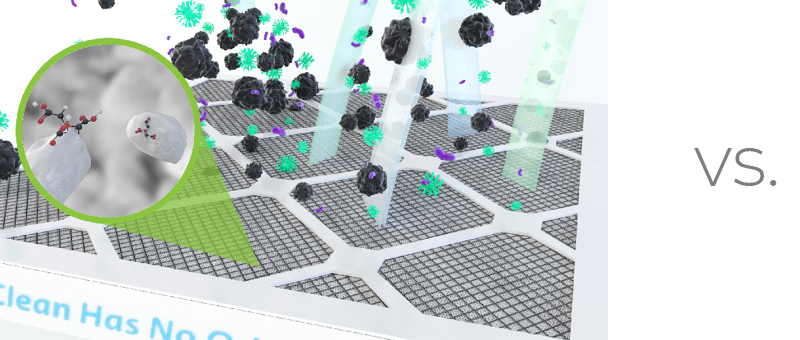
HEPA Technology
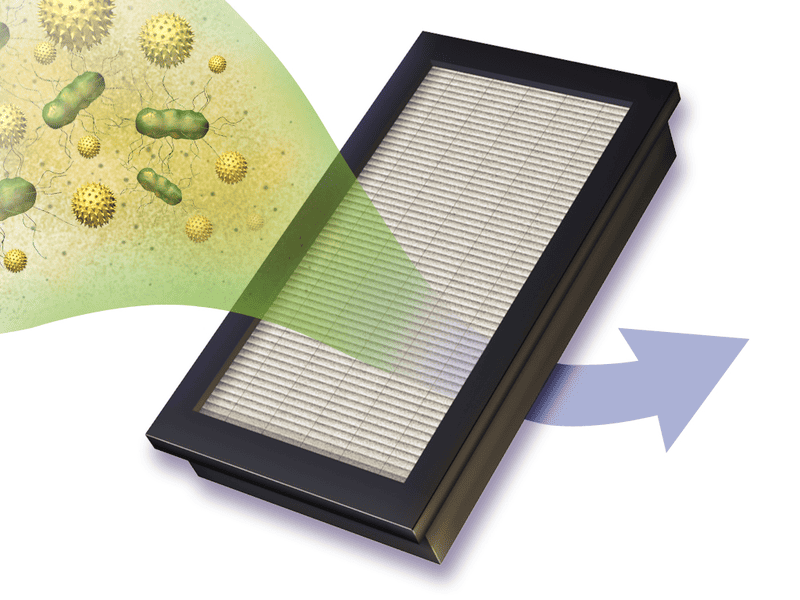 HEPA filters work great for the capture of dust, pollen, pet dander, and other particles 0.3 microns and larger. The EnviroKlenz® Mobile Air System contains a hospital grade HEPA for this purpose.
HEPA filters work great for the capture of dust, pollen, pet dander, and other particles 0.3 microns and larger. The EnviroKlenz® Mobile Air System contains a hospital grade HEPA for this purpose.
HEPA filters do not have the capability to neutralize or capture VOCs or Chemicals, the EnviroKlenz® Mobile Air System uses HEPA filtration alongside high efficiency chemical and odor neutralization technology to create your cleanest air.
Carbon Technology
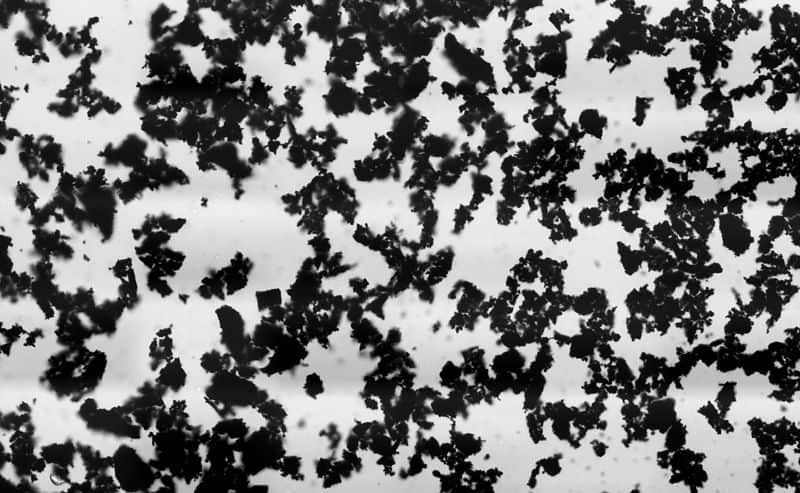
Carbon filters can absorb some chemicals and odors. However, traditional carbon filters can re-release the captured chemicals and odors back into your environment.
Activated Carbon is treated with chemicals to try to destroy what it absorbs, but that ultimately releases different chemicals into your air.
The EnviroKlenz® Mobile Air System adsorbs the chemical pollutants and then reacts internally to neutralize the compound, without releasing or rereleasing into your environment.
The EnviroKlenz® Air Cartridge outperforms the leading carbon filter while using 1/8 the volume of material.
Ionizer Technology
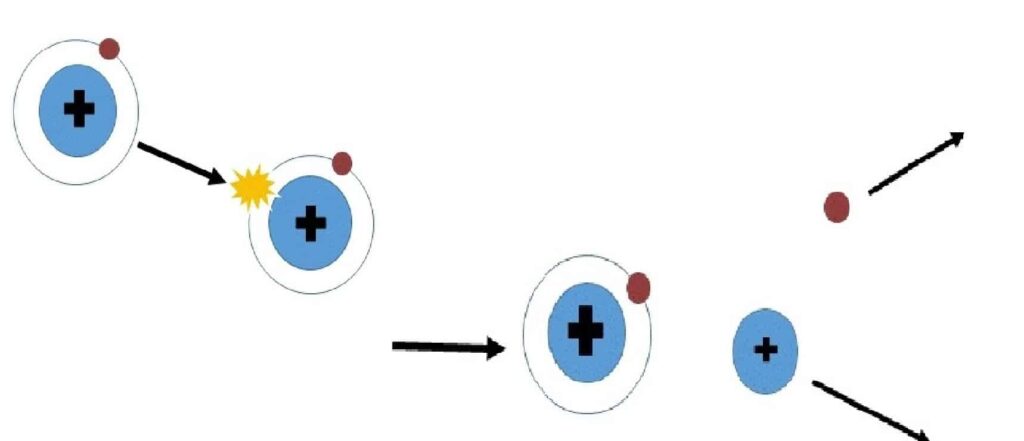
Ionizers release negatively charged ions into your air to stick to particles. This doesn’t eliminate or remove the chemicals, odors, or particulates. It just weighs them down.
The EnviroKlenz® technology does not release anything into your environment. Instead, the Mobile Air System brings air into the machine to be filtered out and neutralized internally so that nothing but clean air is being released.
Ozone Technology

Ozone machines, or “Ozone Generators” are very dangerous to use. These “air purifiers” release harmful ozone into the air to bind with different chemical pollutants. It is dangerous because the ozone itself is extremely toxic.
The EnviroKlenz® Mobile Air System never releases anything into your environment. It uses safe earth minerals and ultimately reacts with chemical pollutants within the machine. You can even use an EnviroKlenz system to remove lingering ozone after a room has been treated with an ozone generator.
PECO Technology
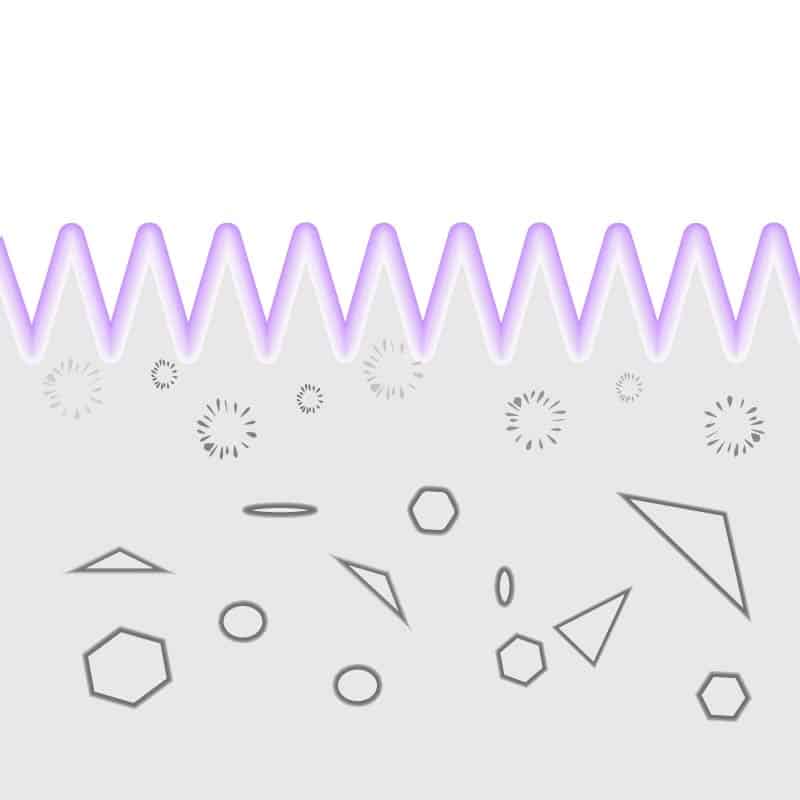
PECO and PCO systems use a light to excite the reactive material within the machine. The excited material then binds to and reacts with the chemicals and particulates that pass through the filter. These exposed reactions can result in a number of different byproducts to be released into your air.
The EnviroKlenz® Mobile Air System does not release byproducts into your air. The reactions that occur in the EnviroKlenz® Air Cartridge occur internally in the earth minerals and are not at risk of releasing or rereleasing into your environment.

Mobile Air System
$749.00 $699.00
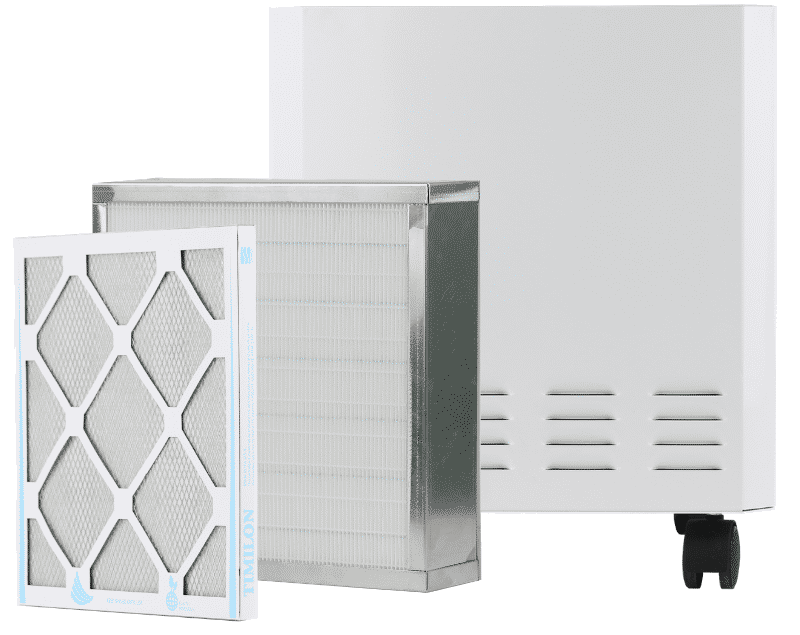
✓ Patented earth mineral technology works to attack VOCs and break them down on a compound level
✓ No chemicals or masking agents
✓ Will not release any chemicals back into your environment
✓ Safer and faster at removing VOC’s than traditional carbon filters and PECO air purifiers
